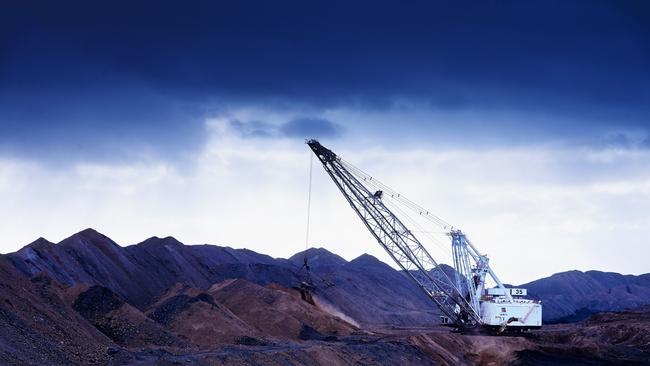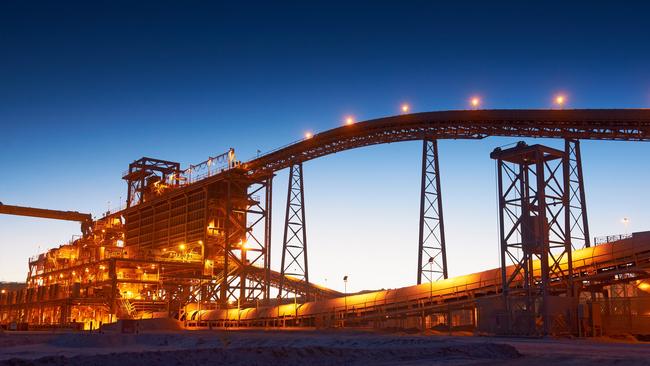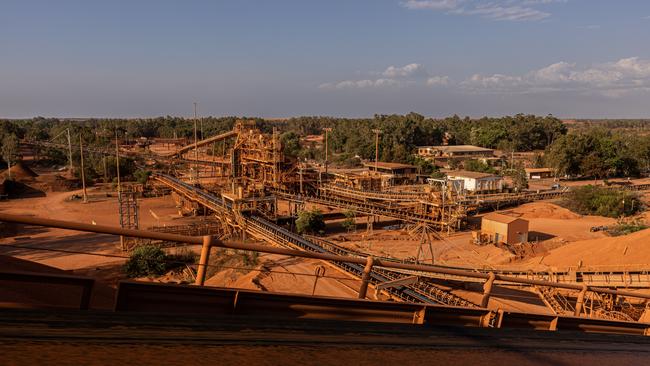What is not widely understood in Australia is that China believes that while copper will be a very large beneficiary of the electrification of energy, significant increases in steel output will be required to build the new facilities and, of course, that will require more iron ore production.
Last week, I set out China’s emissions reduction plan, which is designed to produce low cost energy by integrating nuclear and particularly molten salt cooled thorium energy into its generation system.
But on present technology reducing carbon emissions via electricity will be partly offset by the higher steel emissions which currently account for in the vicinity of eight per cent of China’s emissions.

On present technology, reducing steel carbon dioxide emissions is best achieved from higher grade ore such as magnetite. Accordingly, many Australian iron ore miners have magnetite development plans.
But the largest high grade iron ore development in the world is the giant Simandou mine in Africa, where Rio Tinto and the Chinese have linked in what will become a massive development. The African ore mine was originally planned by the Chinese to lessen dependence on Australia, but in reality Simandou will compete with Vale in Brazil and the smaller Australian high grade mines for the low carbon steel market.
The most popular way of producing low carbon steel from high grade ore is to use hydrogen instead of coking coal, but Rio Tinto is adamant that hydrogen produced from separating water components looks to be too costly on present technology. Accordingly, other avenues are being examined. One of the most attractive looks to be mixing so-called goethite ore (without asbestos) with magnetite and taking advantage of the molecular hydrogen content in the goethite.
Using natural gas as a source of hydrogen is of course much cheaper but carries the carbon dioxide emissions burden.
The Chinese believe that, at least on known current economic reserves, there will be nowhere near enough high grade magnetite and other iron ores to satisfy current demand, let alone the increased demand that will come as part of the electrification construction process.

The world is looking for technologies to process the giant Australian hematite iron ore deposits without coking coal to produce low carbon iron ready for the steel furnaces. There are several technologies currently in the mix.
One that has absorbed large amounts of the Morgan opinion poll cash flow over many years is the Elazac process, owned by Haoma. It is capable of extracting gold and other minerals from tailings plus iron ore.
Chairman Gary Morgan believes it will revolutionise both the gold industry and other areas of mineral processing, but it is unconventional, and the big miners are wary.
Rio Tinto is heading down a different path with its so called BioIron technology which instead of using carbon from coking coal to convert iron ore to BioIron uses plant based material.
Of course, plants acquire their carbon by the process of photosynthesis, whereby extracting the carbon dioxide from the air. Instead of increasing emissions, the BioIron creates a virtuous circle whereby its emissions are then absorbed by a new crop of plants
Under the process rapidly growing crops are harvested and the parts of the plants that are not useful, such as stalks form a biomass that is mixed with the iron ore in pellets that are fed into a microwave furnace that transforms the iron oxide into iron. The electricity required for a microwave furnace is much less than a conventional oven and can be generated via renewables.
The BioIron process is being tested on Rio Tinto’s Australian iron ore. And if it works as envisaged, it will transform Rio in the Pilbara.
BHP will need to either negotiate the use of the technology or take another path. In copper, the Rio Nuton process is being tested on the Escondida ore, which comes from a joint BHP-Rio Tinto mine.

A large part of the former BHP research budgets had been allocated to developing a leaching process to test its Olympic Dam ores. It was not successful. Whether Rio Tinto’s Nuton will work on Escondida is yet to be determined. If it does work, BHP may ask Rio to try it on Olympic Dam.
What we’re looking at, the beginnings of a potential mining revolution. If the Rio processes work in the field, as distinct from the laboratory, then it becomes a technology company. If they don’t then it’s back to pure mining, but new ideas will emerge.





Behind the current turmoil in the iron ore price is a technology revolution that longer term will govern the future prosperity of our big hematite iron ore miners led by BHP, Rio Tinto, Fortescue and Hancock. And out of that revolution there is a chance that Rio Tinto may emerge as a technology company.